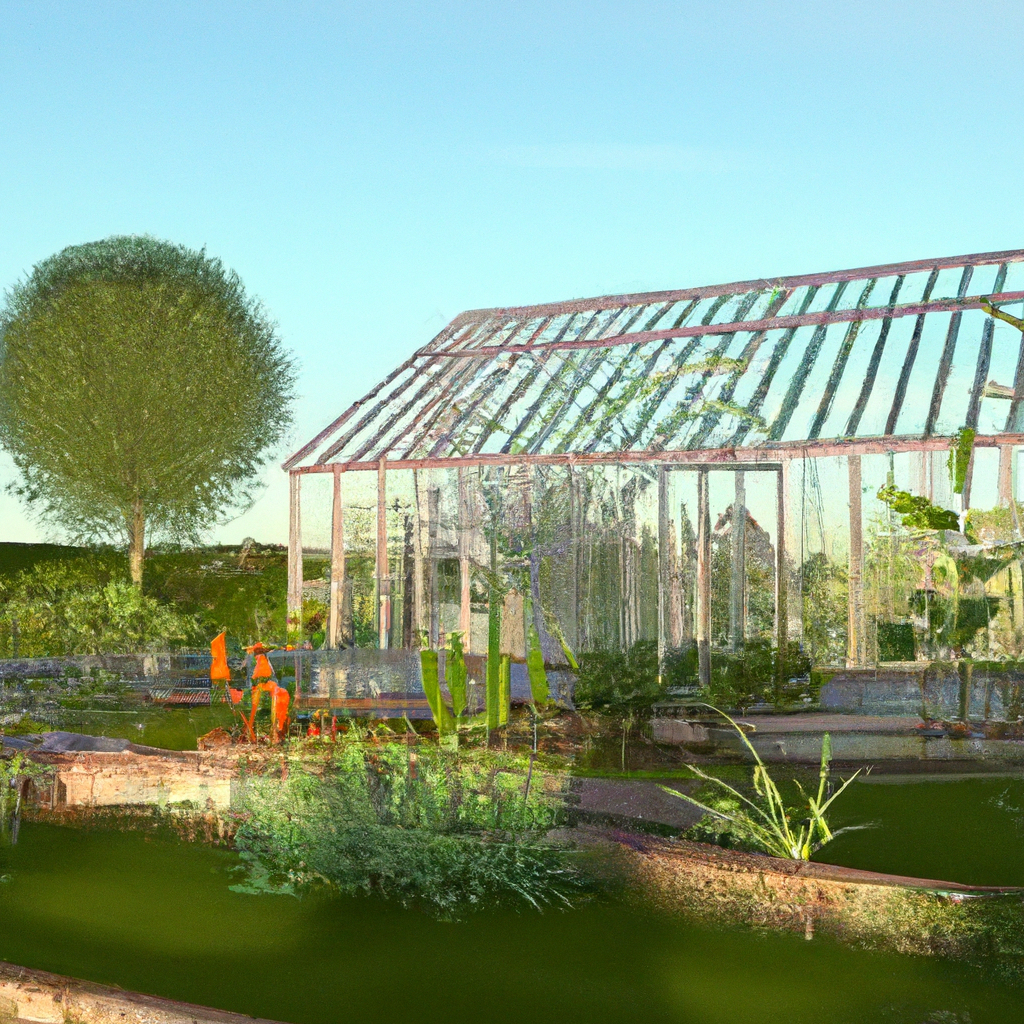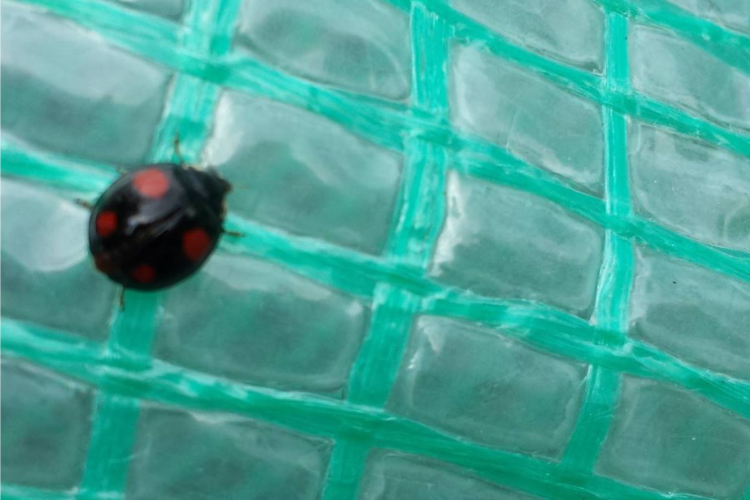
Are you tired of battling with algae growth in your greenhouse? Look no further! This article provides you with effective solutions to help you regain control over this pesky problem. With these tips and tricks, you’ll be able to maintain a healthy environment for your plants while keeping algae at bay. Say goodbye to the endless scrubbing and hello to a cleaner, thriving greenhouse!
Introduction
If you’re a greenhouse owner or someone interested in horticulture, you may have come across the issue of algae growth in your greenhouse. Algae can be a nuisance, causing a range of problems from reducing light penetration to contaminating water sources. Fortunately, there are effective measures you can take to control algae growth and maintain a healthy greenhouse environment. In this article, we will explore various methods, from preventive measures to chemical solutions and biological control methods, to help you effectively manage algae growth in your greenhouse.
Understanding Algae Growth
What is algae?
Algae are simple, plant-like organisms that thrive in moist environments, such as water bodies and surfaces exposed to excessive moisture. They belong to a diverse group of photosynthetic organisms, ranging from microscopic single-celled forms to larger, more complex multicellular species. In a greenhouse, algae can thrive on various surfaces, including walls, floors, pots, and even plant leaves.
Conditions that promote algae growth
Algae require certain environmental conditions to grow and multiply rapidly. Some key factors that promote algae growth in a greenhouse include:
- Moisture: Algae thrive in moist environments, so excessive humidity and inadequate drainage can create ideal conditions for their growth.
- Light: Algae require light for photosynthesis. Excessive or prolonged exposure to sunlight, especially when combined with high nutrient levels, can stimulate algae growth.
- Nutrients: Algae feed on nutrients, such as nitrogen and phosphorus, which are often present in organic matter, fertilizers, and stagnant water. Excess nutrients can act as a catalyst for algae proliferation.
- Poor ventilation: Insufficient airflow and poor ventilation in a greenhouse can create stagnant conditions, favoring algae growth.
Understanding these factors and their influence on algae growth is crucial for implementing effective control measures.

Negative Effects of Algae in a Greenhouse
While algae may seem harmless at first, their presence in a greenhouse can lead to a range of negative effects. These include:
- Light competition: As algae grow, they can cover surfaces, including greenhouse walls and glazing, reducing the amount of light reaching plants. This can hinder photosynthesis and limit plant growth.
- Reduced water quality: Algae can contaminate water sources, such as reservoirs or irrigation systems, with their biomass. This can lead to clogged pipes, drip emitters, and filters, affecting the efficiency of irrigation and nutrient delivery systems.
- Disease risk: Algae provide a favorable environment for the growth of other microorganisms, including fungi and bacteria. This can increase the risk of plant diseases and compromise the health of your greenhouse crops.
- Aesthetic concerns: Algae growth can make your greenhouse look unappealing and unkempt. Greenhouse aesthetics are important for both personal pride and creating a pleasant environment for workers or visitors.
Understanding these negative effects highlights the importance of implementing effective algae control measures in your greenhouse.
Preventive Measures
To prevent algae growth in your greenhouse, it is crucial to maintain proper ventilation, control moisture levels, use proper lighting, and implement a water management system.
Maintaining proper ventilation
Adequate airflow is essential for preventing stagnant conditions that favor algae growth. Ensure your greenhouse has well-designed ventilation systems, including fans and vents, to promote air circulation and regulate humidity levels. Regularly inspect and maintain these systems to ensure optimal performance.
Controlling moisture levels
Excessive moisture is a primary factor contributing to algae growth. Implement proper irrigation practices to avoid overwatering and standing water. Ensure efficient drainage by using well-drained soil, installing drainage systems, and regularly checking and cleaning clogged drains.
Using proper lighting
Proper lighting plays a crucial role in preventing algae growth. Greenhouses often use artificial lighting in addition to natural sunlight. Optimize your lighting setup by providing adequate light intensity and duration for the desired plant growth while minimizing excess light exposure that may promote algae growth.
Implementing a water management system
Develop and implement a water management system that includes regular monitoring, filtering, and sterilizing water sources. Conduct regular water tests to ensure appropriate nutrient levels and minimize potential nutrient imbalances that can promote algae growth.
By implementing these preventive measures, you can significantly reduce the risk of algae growth in your greenhouse.

Physical Barriers
In addition to preventive measures, physical barriers can provide an effective defense against algae growth.
Installing shade cloths
One way to prevent excessive sunlight exposure and subsequent algae growth is by installing shade cloths. These fabrics can effectively filter light, reducing the amount of direct sunlight reaching surfaces within the greenhouse. By selecting the appropriate shade percentage, you can create the optimal light conditions for your plants while inhibiting algae growth.
Using algae screens or nets
Algae screens or nets can be another valuable tool in preventing algae growth. These screens are specifically designed to prevent algae spores from entering the greenhouse, effectively blocking their growth on surfaces. Regularly inspect and clean these screens to maintain their effectiveness.
Chemical Solutions
Chemical solutions can be an effective way to combat existing algae growth and prevent its reoccurrence.
Use of algaecides
Algaecides are chemical compounds specifically formulated to kill or inhibit algae growth. They are available in various forms, including liquids and granules, and can be applied directly to affected surfaces or water sources. When using algaecides, it is important to follow instructions carefully to ensure proper application and avoid adversely affecting your plants or other beneficial organisms in the greenhouse.
Utilizing UV sterilization
Ultraviolet (UV) sterilization involves using UV light to eradicate algae and other microorganisms in water sources. UV sterilizers, often installed within the greenhouse’s water circulation or filtration system, emit UV light at specific wavelengths that efficiently kill algae cells. This method can help maintain water quality and prevent algae growth in irrigation systems.
Applying hydrogen peroxide
Hydrogen peroxide (H2O2) can effectively kill algae cells without harming plants when used in appropriate concentrations. Dilute hydrogen peroxide solutions can be applied directly to affected areas or added to water sources to inhibit algae growth. Carefully follow recommended dosages and application methods to avoid damaging your plants.

Biological Control Methods
Implementing biological control methods can provide a long-term, sustainable solution to algae growth.
Introduction of algae-eating organisms
Introducing natural predators of algae, such as certain fish species or snails, can help control algae growth. These organisms feed on algae, reducing their populations and preventing excessive growth. However, it is important to carefully consider the compatibility of these organisms with your greenhouse environment and other organisms present.
Creating a balanced ecosystem
Developing a balanced ecosystem within your greenhouse can also help control algae growth. By promoting the growth of beneficial microorganisms, such as beneficial bacteria or certain fungi, you can create an environment that competes with algae for resources. These natural competitors can help limit algae growth and maintain a healthier greenhouse ecosystem.
Proper Cleaning and Maintenance
Regular cleaning and maintenance practices are essential for preventing and controlling algae growth in a greenhouse.
Regular removal of debris
Remove any fallen leaves, plant debris, or algae buildup promptly. Regularly sweep or vacuum the greenhouse floors and surfaces to prevent the accumulation of organic matter that can support algae growth. Proper waste disposal practices should also be followed to prevent cross-contamination.
Cleaning and sanitizing equipment
Ensure all greenhouse equipment, including pots, trays, and tools, is regularly cleaned and sanitized. Algae can adhere to surfaces and equipment, serving as a potential source of reinfection. Use appropriate cleaning agents, such as mild detergents or disinfectants, and follow recommended procedures to maintain a clean environment.
Preventing cross-contamination
Algae can spread from one area of the greenhouse to another if proper precautions are not taken. Implement hygiene practices and quarantine procedures to prevent the transfer of algae-infested materials from one growing area to another. Regularly inspect plants for signs of algae growth and take immediate action to prevent further spread.

Monitoring and Early Detection
Regular monitoring and early detection of algae growth are vital to implementing timely control measures.
Routine inspection of greenhouse environment
Regularly inspect your greenhouse environment, including surfaces, water sources, and plants, for any signs of algae growth. Look out for green or slimy patches, discoloration, or unusual growth. Early detection allows for prompt action and prevents the spread of algae.
Testing water quality
Regularly test the quality of your greenhouse water sources. Algae growth is often associated with nutrient imbalances, so monitoring nutrient levels, pH, and other water parameters can help identify potential issues before they contribute to algae growth. Adjust water treatments and nutrient supplementation as needed to maintain optimal water quality.
Utilizing diagnostic tools
Utilize diagnostic tools, such as handheld microscopes or algae detection kits, to identify and analyze algae species present in your greenhouse. This information can help you determine the most effective control measures and guide your preventive efforts.
Integrated Pest Management Strategies
Utilizing integrated pest management (IPM) strategies can further support effective algae control in your greenhouse.
Implementing cultural practices
Cultural practices, such as proper plant spacing and pruning, can help reduce humidity levels and promote better airflow, making the greenhouse environment less conducive to algae growth. Ensure plants are healthy and adequately fertilized, as nutrient deficiencies and imbalances can create conditions favorable for algae colonization.
Using beneficial insects
Employing beneficial insects, such as predatory mites or ladybugs, can indirectly help control algae growth by preying on other pests that may indirectly promote algae growth. By maintaining a balanced pest population, you can minimize conditions that favor algae proliferation.
In conclusion, managing algae growth in a greenhouse requires a comprehensive approach. By understanding the factors that promote algae growth, implementing preventive measures, utilizing physical barriers, employing chemical solutions, adopting biological control methods, maintaining cleanliness, and practicing regular monitoring, you can effectively control algae growth and maintain a healthy greenhouse environment. Remember, a proactive and integrated approach is key to successful algae management in your greenhouse.


